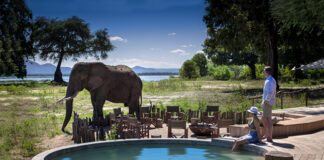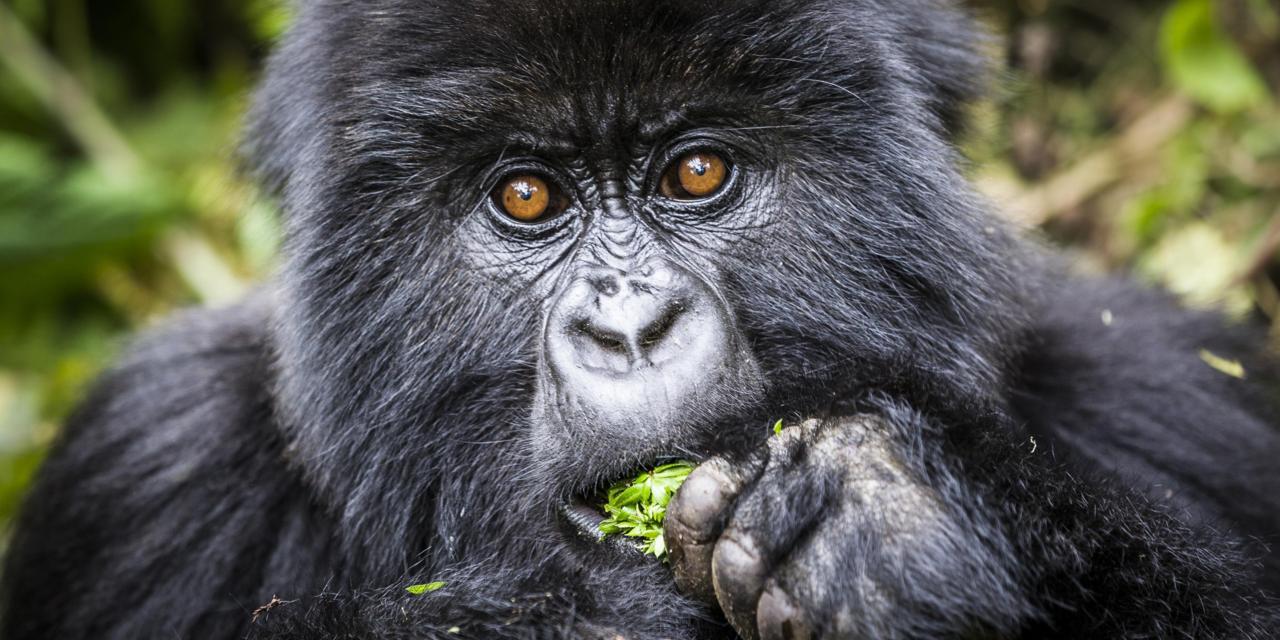The tourism industry in Angola is based on the country’s natural beauty, including its rivers, waterfalls and scenic coastline.
Angola’s tourism industry is relatively new, but growing steadily because the country is well equipped with different tourist sites that attract more people in the country. The attractions include; national parks, landscape of the country and the climate.
The main goal of the Angolan Government in the forecast period is to improve travel and tourism so that the country will no longer be so dependent on oil extraction.
Angola may have its issues, a civil war that ravaged the country and many of its national parks, poaching problems and difficult to obtain visas but that should not stop you visiting this country. It is after all the largest country in Africa and has plenty to offer.
From nature at its most spectacular with springboks, lions, elephants and gorillas, to forgotten but beautiful buildings from the Portuguese colonization here.
Angola boasts an expansive coastline of Atlantic Ocean beauty and a beautiful blend of grasslands, Savannah, tropical forests and urban expanses inland.
Angola is a country trying to make a name for itself on the global stage. It claims to be the fastest growing economy in the world, with various forms of mining exports supporting the claim and the tourist industry is attempting to grow in the same way.
Advice against visiting the country is fairly common but there is also useful advice on places that can be reached and how to enjoy them safely.
Obtaining a visa can also be made easier or harder depending on where you are travelling and who will be accompanying you.
With all the bureaucracy aside however, Angola is undoubtedly a beautiful and mysterious country that will reward any traveller adventurous enough to embark on a journey to the country. So let’s explore the best places to visit in Angola.
Luanda
The capital of Angola is full of stark contrasts. The beautiful Atlantic Ocean views are disrupted by busy ships and the high rise modern looking buildings are contrasted by lean to huts built to accommodate people in the rapidly expanding city.
Over-population is apparent in other ways too, namely the insane morning traffic and the stink that regularly trouble the city.
Despite all these problems however, Luanda certainly has its charms and is another side to Africa that is worth experiencing.
Kissama National Park
Only a 70km ride south from Luanda is the Parque Nacional de Kissama, a wildlife sanctuary that has utilized stunning natural settings to protect and preserve many African species.
The park began life as a nature reserve in 1938 and subsequently evolved into a National Park in 1957.
During the Civil War years, the park was neglected and fell victim to poaching but its population of buffalo, elephants and even sea turtles are now going strong. The park even received 10 Elephants by air mail from Russia in 2000.
Tunda Vala Volcanic Fissure
The Tundavala Fissure is one of the most spectacular natural sights in Angola. It can be found between the cities of Lubango and Namibe at an elevation of 2,600m above sea level.
At this height it goes without saying that the views are phenomenal and the visible vistas are some of the best on offer in Africa.
Commonly reached by thrill seeking hikers, the view of the descent back down to sea level is dizzying steep. As well as the sheer rock faces the Tundavala also has patches of savannah, grass and forest landscapes.
Dilolo Lake
This mythical lake can be found in Moxico, eastern Angola. It is the largest lake in the country and serves as an important tourist spot. Despite being situated just outside of the Cameia Park boundaries, the lake is teeming with wildlife including rare bird species and aquatic life.
The lake is an impressive 12km in length and sits at roughly 1000m above sea level. The reason for the myths surrounding this lake are the unusual waves that always head to the east of the lake.
In folklore these waves are believed to be a supernatural force to scare people from fishing the lake. If you fancy a dip in the lake, September is the best month with pleasant temperatures of 32 degrees Celsius.
Chiumbe River Falls
Situated in Lunda Sol, the Dala Waterfalls are about 60m high and conjure a spectacular scene with the mist and spray created from the crashing of the water on the rocks below.
The waterfalls can be comfortably viewed from a bridge near the base of the falls or, for those who truly love the scene, a hotel is built only 50m away from the waterfalls.
The waterfalls, also referred to as the Chiumbe River falls, should not be confused with the Cassengo falls which are smaller but situated in the same area of Angola.
Benguela
The city of Benguela in western Angola is situated on a bay of the same name and is an important tourist destination for the country. The early economy of the city was established on mining and then the slave trade to Cuba and Brazil.
Tourism is actively promoted in the city and an international railway is located nearby. The main attractions of the city are its beautiful ocean-side location coupled with the breath-taking Portuguese architecture. The beaches are fantastic places to unwind and the people are very friendly.
Maiombe Forest
The Maiombe Forest is one of the most spectacular natural areas in Angola. It boasts more than 400 square km of forest and is rather fittingly referred to as the “Amazon of Africa”. The forest is a fantastic location for wildlife lovers with hundreds of rare species, many of them unique to the area.
Animals include gorillas, elephants, chimps, rare birds and butterflies. The woods in the forest are equally as rare as the animals and include ebony and mahogany.
The biggest town in the reserve, Buco Zau, has a small guesthouse with basic facilities for those wishing to fully immerse themselves in the nature.
Lobito
The port and town of Lobito is situated within Benguela and is both an important part of the export and the tourist economy. The port and coastline here are popular with anglers trying to land a whopping Giant Tarpon which can weigh up to 200lbs.
For the less extreme, the beach here is a great place to relax and watch the sunset or there are plenty of restaurants and Old Portuguese buildings here which can be worth taking the time to explore for a day or two.
The Arch Lagoon
The Arch Lagoon is located in the Namib Desert not far from the town of Tombwa. The lagoon takes its name from the stunning natural arch rock formations that have been shaped by nature over many years.
As well as offering the opportunity to view these amazing formations, the lagoon is a great place to relax due to its tranquil nature and peaceful surroundings.
While relaxing at this oasis, visitors may also glimpse some of the rare and exotic wildlife species that inhabit the area surrounding the Arch Lagoon.
Iona National Park
The largest national park in Angola, the Iona National Park is situated in the most south-westerly point of the country. It covers an expansive area of over 15,000 square kilometres.
Although the national parks were hit hard by illegal animal poaching during the civil war, efforts to replace and restore the wildlife in the park are underway.
As well as animals such as Springbok, Ostrich and Cheetah, the park is also home to indigenous people who, according to scientists are the most “culturally intact” people on the continent.
Cangandala National Park
Another beautiful area of National Park in Angola, the Cangandala National Park is the smallest of the parks in Angola but it still has plenty to offer.
The area is home to the amazing giant sable antelope, the rarest antelope in the world and the national symbol of Angola. The park is well served with road access and airports within the province.
The park, like many others in Angola faces a battle against illegal poaching and many on-going efforts are going in order to protect the park and indigenous wildlife.
Mupa National Park
The Mupa National Park was originally founded in 1964 whilst the area was still a Portuguese colony. The main purpose of the park was to protect a sub species of the giraffe however these were all sadly wiped out: mainly due to landmines left over from the civil war.
Other mammals within the park include wild dogs, lions, leopards and hyenas. The park is also a haven for a variety of rare bird life although mineral mining is currently a threat to these species.
Huambo
Huambo is a large province in Angola with 11 municipalities and a population of around 1.7 million people. The climate in Huambo is tropical with a dry and cold season and a hot, wet season.
The National Forest Reserve of Kavongue can be found in the province and is a great place for adventurers with many taking to the reserve for activities such as rappelling, canyoning, paragliding and canoeing. The city of Huambo is industrial and has its roots in mining.
Cabinda
This oil rich city in Angola has been marred somewhat by the shooting of the Togo national football team during the Africa Cup of Nations in 2010.
It is also rather a difficult place to obtain a visa to visit, however if this can be overcome, the city and province have some exceptional spots worth visiting.
The M’Buco-M’Buadi Cemetery houses the remains of Cabinda kings as well as a range of marvelous sculptures. There are also ruins of a 16th Century cathedral and the forest reserve of Kakongo.
Malanje
As well as being home to the Cangandala National Park mentioned earlier, the province of Malanje is also home the Black Stones of Pungo Adongo; a strange stone natural rock formation formed over millions of years.
The area is also home to many waterfalls, forests and natural areas which all make for great places to take safaris or try out an extreme excursion such as canyoning or bungee jumping.








